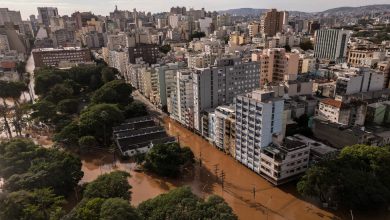Power Outage Sweeps Pakistan, Dropping Millions Into Darkness

ISLAMABAD, Pakistan — Millions of Pakistanis lost electricity Monday as major power outage swept across the country, the longest in recent years and a breakdown that put the focus back on the country’s battered and poorly maintained power grid.
Pakistan has been plagued by frequent outages and blackouts in recent years, and the latest to afflict its people began at 7:34 a.m. Monday. By late evening, much of the country was still shrouded in darkness. In some parts of Islamabad, the capital, and the neighboring city of Rawalpindi, power was restored after eight hours, officials said.
Local officials said the outage began in southern Sindh Province after an unusual fluctuation in the voltage. That lead to a cascading failure at power plants throughout the country, said Khurram Dastgir Khan, the energy minister, at a news conference.
The failure swept through major cities, including Islamabad, Karachi, Lahore, Peshawar and Quetta, as well as dozens of small cities and towns, causing a widespread public outcry as officials scrambled to restore the power on a cold winter morning.
The power breakdown caused a major disruption in daily activity. Internet and mobile phone services blinkered offline in intermittent outages across the country. Emergency generators helped some hospitals, government offices, schools, and airports continued to operate.
“There was complete chaos in the hospital because of the power outage,” said Akram Shah, a 45-year-old textile worker who was accompanying his sick mother at the state-run Abbasi Shaheed Hospital in Karachi. “Doctors asked most of the patients, who were at hospitals for surgeries, and tests, to come again tomorrow.”
People in several cities complained that they were facing water shortages as water pumps, which run on electricity, were not working.
“We did not have water to wash the dishes, as water could not be pumped from the underground water tank to the overhead tank,” said Shafiqa Ali, a nurse, 45, who works in a private clinic in Karachi. “We could not book cars from the ride-hailing apps to send our children to schools.”
Many shopkeepers used small generators to keep their lights on. But some people complained that they could not withdraw money from A.T.M.s because they had stopped working.
Most people in the country use backup power devices in case of outages, but the small batteries of these devices often die when the outages last many hours.
High demand and lack of supply to the power grid was causing difficulties in restoration work, officials told the energy minister at a briefing in the national power control center in Islamabad.
Prime Minister Shehbaz Sharif has ordered a high-level inquiry to determine the exact cause of the failure and who or what was responsibility.
Pakistan’s power transmission infrastructure is in dire need of upgrading. The lack of proper maintenance and the inability of successive governments to invest in new infrastructure has left the power distribution network prone to quick failures. Disasters like last year’s devastating floods, which killed more than 1,100 people, have also damaged infrastructure, compounding the difficulties of improving or repairing the system.
Blackouts, therefore, are becoming common.
A nationwide power breakdown in January 2021 plunged much of the country into darkness, and it took officials as long as eight hours to restore power in major cities, and more than 18 hours to fully restore the electricity supply.
Two years earlier, there was a major power failure across areas of the Sindh and Baluchistan Provinces. And in May 2018, a widespread breakdown in the northern system of Pakistan’s power company, the National Transmission and Despatch Company, caused a power breakdown in Punjab and Khyber-Pakhtunkhwa Provinces.
Salman Masood reported from Islamabad, Zia-ur Rehman from Karachi.




